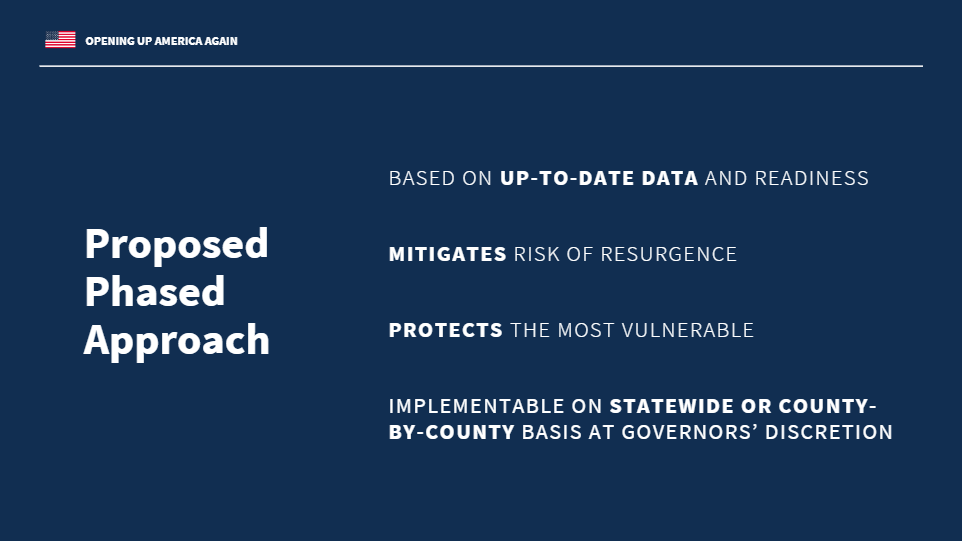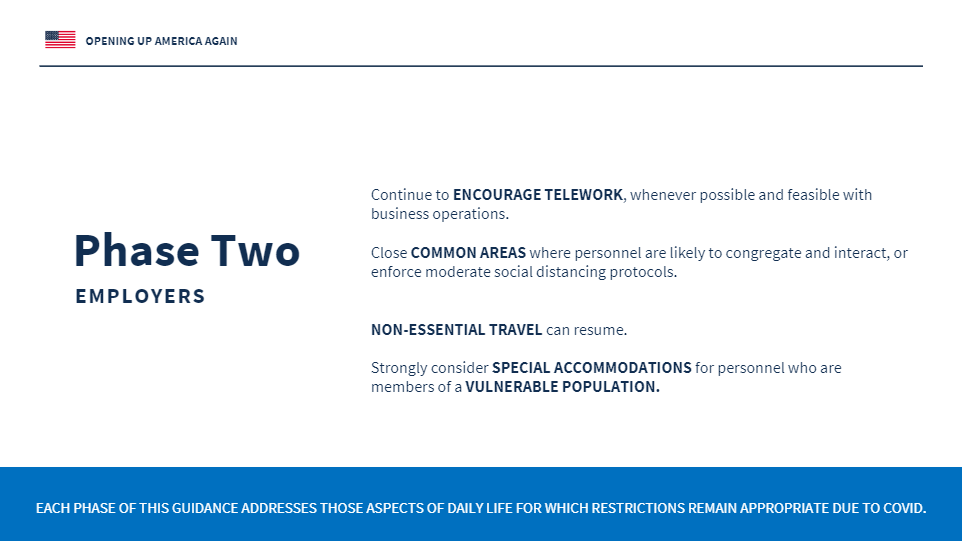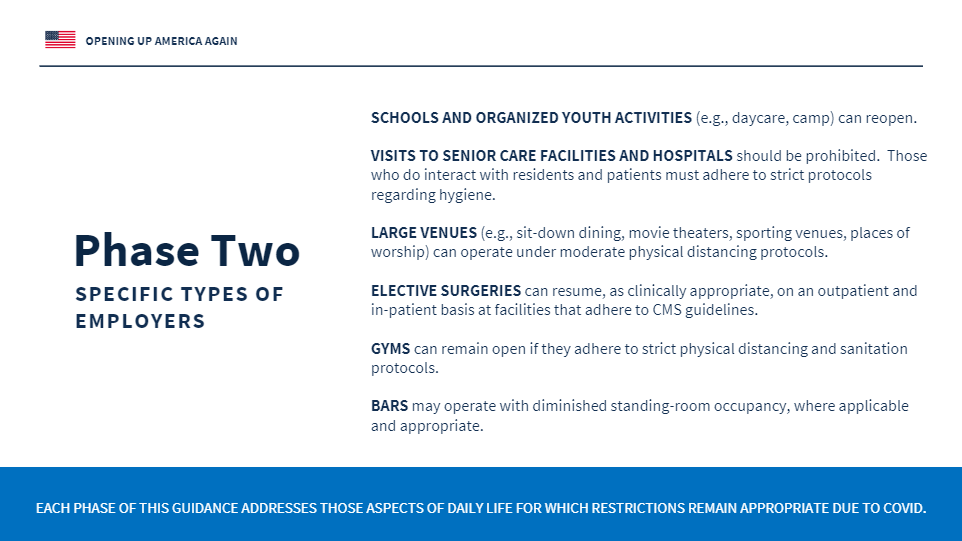According to the new guidelines (shown below), states must be able to rapidly supply protective equipment and the federal government is recommending that social distancing guidance remain in place during the first of what Trump imagines will be a three-phase process.
The guidelines also encourage telework and suggest schools remain closed in the initial phase, although, apparently, the president told governors on Thursday during a call that some states could reopen schools before May 1, the day the extension of federal social distancing guidance is due to roll off.
Gyms can reopen in Phase One under “strict” standards, but not bars. So, you can lift weights, but you can’t slam dunks. Also allowed under Phase One: The resumption of elective surgeries.
Here are the guidelines for individuals and general employers under the first phase:
- ALL VULNERABLE INDIVIDUALS should continue to shelter in place. Members of households with vulnerable residents should be aware that by returning to work or other environments where distancing is not practical, they could carry the virus back home. Precautions should be taken to isolate from vulnerable residents. All individuals, WHEN IN PUBLIC (e.g., parks, outdoor recreation areas, shopping areas), should maximize physical distance from others. Social settings of more than 10 people, where appropriate distancing may not be practical, should be avoided unless precautionary measures are observed. Avoid SOCIALIZING in groups of more than 10 people in circumstances that do not readily allow for appropriate physical distancing (e.g., receptions, trade shows) MINIMIZE NON-ESSENTIAL TRAVEL and adhere to CDC guidelines regarding isolation following travel
- Continue to ENCOURAGE TELEWORK, whenever possible and feasible with business operations. If possible, RETURN TO WORK IN PHASES. Close COMMON AREAS where personnel are likely to congregate and interact, or enforce strict social distancing protocols. Minimize NON-ESSENTIAL TRAVEL and adhere to CDC guidelines regarding isolation following travel. Strongly consider SPECIAL ACCOMMODATIONS for personnel who are members of a VULNERABLE POPULATION.
Phase Two is only for states that exhibit no signs of a rebound in infections. Only in that phase can non-essential travel resume.
Phase Three is pretty simple, really. “Vulnerable individuals can resume public interactions, but should practice physical distancing, minimizing exposure to social settings where distancing may not be practical, unless precautionary measures are observed”, the guidelines read, adding that even low-risk individuals “should consider minimizing time spent in crowded environments”.
Employers in Phase Three can resume the “unrestricted staffing of worksites”.
In all phases, employers are asked to “monitor [the] workforce for indicative symptoms” and advised “not to allow symptomatic people to physically return to work until cleared by a medical provider”.
As far as stay-at-home orders go, states should be able to show a “downward trajectory” in total cases prior to lifting the kind of shelter-in-place directives under which the vast majority of US citizens have been living for the past several weeks.
Employers, Trump says, should work on their own social distancing protocols, check workers’ temperatures and pay close attention to sanitation. Disinfection efforts should be increased, the White House recommends.
On the call with state officials Thursday, Trump summed up the situation by telling governors that if they’re ready, and assuming their states have “low numbers”, they should quickly return to normalcy. The president emphasized safety, but also hinted at a sense of urgency.
Trump named the reopening plan after his campaign slogan. It’s called: “Opening up America Again”.

















